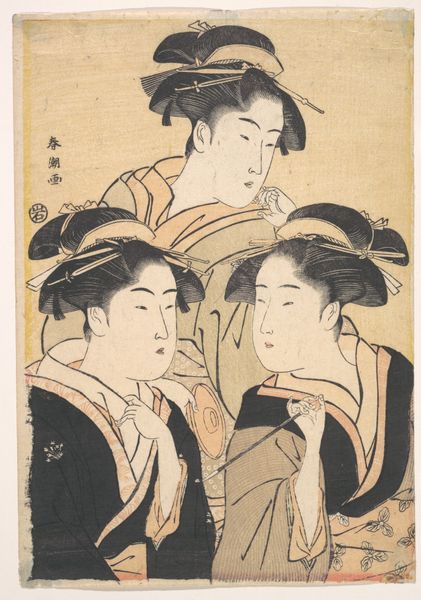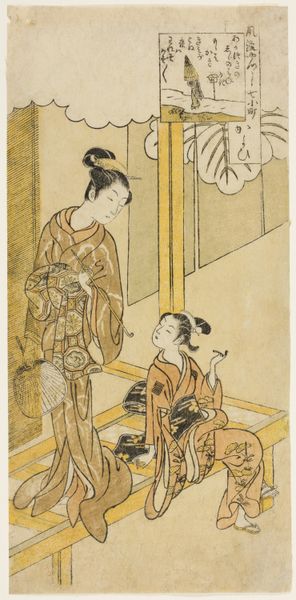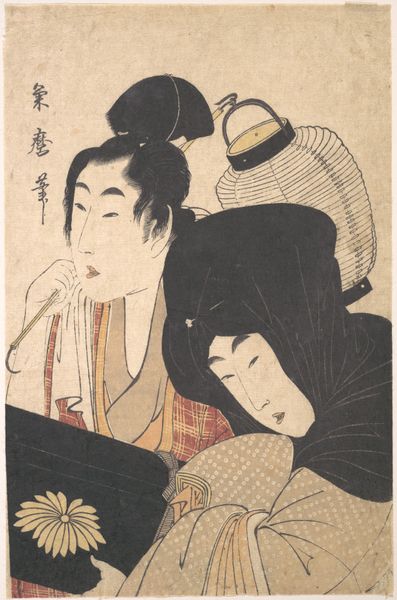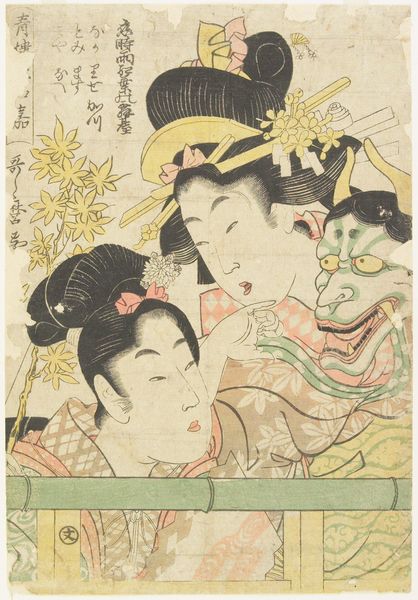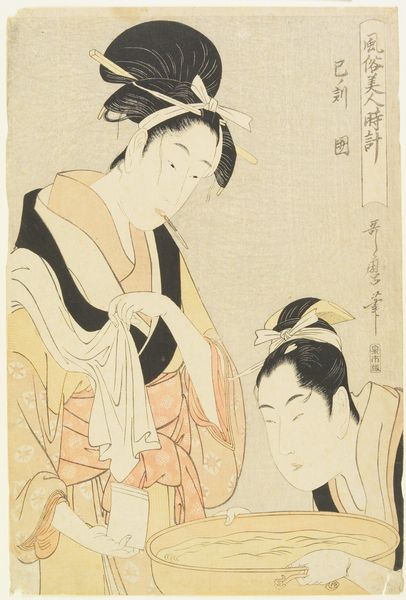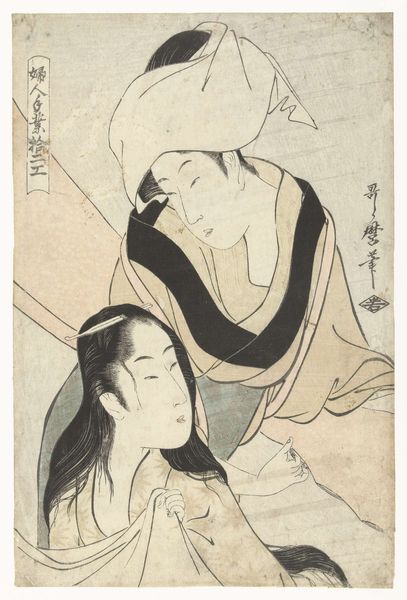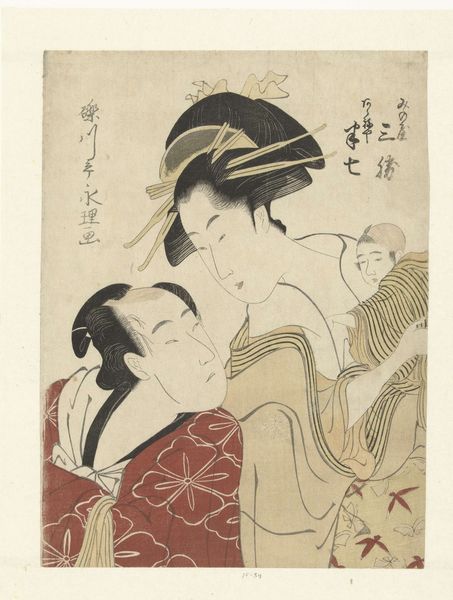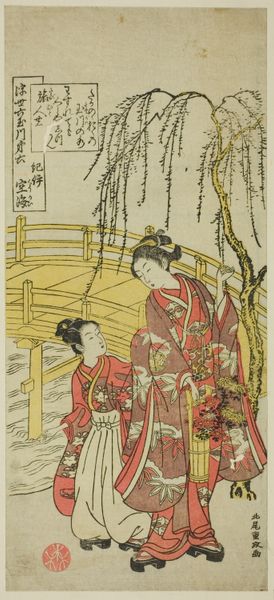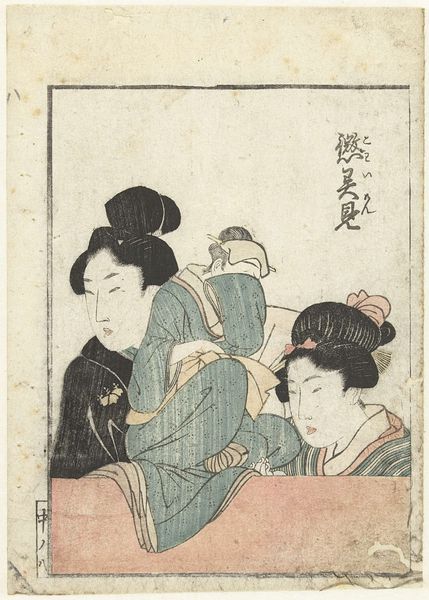
print, ink, woodblock-print
#
portrait
#
ink painting
# print
#
asian-art
#
ukiyo-e
#
japan
#
figuration
#
ink
#
woodblock-print
#
genre-painting
#
erotic-art
Dimensions: 28 × 4 7/8 in.
Copyright: Public Domain
Curator: Suzuki Harunobu's woodblock print, "The Love Letter," from around 1769. It resides here at the Art Institute of Chicago. Editor: The immediate impression is one of intimacy and delicacy. The pale colors create a very tender, almost dreamlike space. Curator: Yes, it's a superb example of ukiyo-e, reflecting the leisure and cultural pursuits of the Edo period. The very act of exchanging letters held social significance and became common with the rise of a merchant class. Editor: Looking closely, the lines are so incredibly fine, almost like a drawing. The delicate layering of color must have required incredible skill. It has a strong pictorial depth too, almost as though the upper and lower portions take place in distinct yet connected rooms. Curator: Absolutely, and it speaks to a shift in printing techniques. Harunobu was instrumental in developing "brocade prints," full-color prints requiring multiple blocks. Notice the presence of blossoming trees in the background; these and other similar natural elements served as visual metaphors that viewers of this period immediately understood. Editor: Do you see, just how slightly erotic it feels in an innocent way? The way their kimonos seem to drape. A suggestion of vulnerability. But at the same time, I admire how the planes overlap creating a visual complexity—it is by no means simple or overtly decorative. Curator: And the gaze that this image asks of its audience… such images offered, especially with their availability to different segments of Edo-period society, allowed viewers to consider shifting and changing ideas of the place of women, sexuality, and what public and private could entail in that era. Editor: I am truly taken by how such few blocks yield such tremendous aesthetic expression. It showcases the possibilities within limitations. The interplay of negative and positive space guides the eye. It embodies restrained elegance. Curator: Harunobu managed to capture, through deceptively simple means, not just an image but a moment freighted with social implications, touching upon nascent urban cultures, class structures, and unspoken feelings of love, sexuality, and affection in eighteenth century Edo. Editor: Seeing the nuances in the use of the visual and representational language has opened my mind in a truly intimate way.
Comments
No comments
Be the first to comment and join the conversation on the ultimate creative platform.

